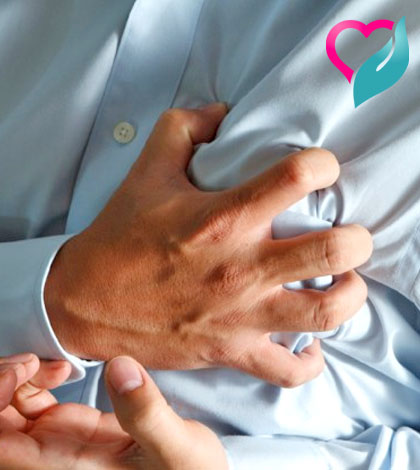Can you imagine our human heart having an electrical system?! Heart block refers to a delay in the normal flow of electrical impulses that cause the heart to beat. There is an abnormal heart rhythm resulting in a slow heart rate.
[wp_ad_camp_1]
Definition of Heart Block
The heart has four chambers: two upper chambers (atria) and two lower chambers (ventricles). The sinoatrial (SA) node located near the top of the right atrium, produces electrical signals that are sent to the atrioventricular (AV) node. The AV node then sends the signals to the ventricles, which are the primary pumping chambers of the heart. When the heart is functioning well, the electrical signals are transmitted smoothly from the atria to the ventricles, causing rhythmic muscle contractions that pump blood to the rest of the body. Heart block occurs when the electrical signals from the sinoatrial node are too slow. A heart block does not mean that blood is being blocked from the heart.
[wp_ad_camp_4]
There are three types of heart block, ranging from mild to serious:
First-degree heart block: This is the mildest form of heart block. Here, the electrical signals from the SA node move slower than normal to the AV node, but all signals reach the ventricles. There are usually no symptoms, and heartbeat and rhythm are normal. This type of heart block is often found in well-trained athletes.
Second-degree heart block: A second-degree heart block means that some of the electrical signals are not reaching the ventricles. This causes “dropped beats.” There are two types of second-degree heart block:
Type I second-degree heart block (also called Mobitz Type I or Wenckebach’s AV block). The electrical signals become increasingly delayed with each heartbeat, ultimately causing a beat to be missed.
Type II second-degree heart block (also called Mobitz Type II). In this type of heart block, some of the electrical signals do not reach the ventricles. This is less common, but more serious.
Third-degree or complete heart block: This is the most serious type of heart block. In this condition, no electrical signals are able to reach the ventricles. The ventricles compensate by contracting on their own, but at a much slower rate than is safe for the heart to maintain full function.
Third-degree heart block is extremely serious and requires immediate care from your doctor. First and second degree heart blocks should be diagnosed by your physician, who will help you determine the best course of treatment, if any.
[wp_ad_camp_2]
Symptoms of Heart Block
The symptoms of heart block depend on which type you have and how severe it is.
First degree heart block
First degree heart block does not cause any noticeable symptoms. Most people are only aware they have the condition when they are tested for an unrelated medical condition. It is only recognized by an electrocardiograph (ECG).
Second degree heart block
Most people with second degree Mobitz type 1 heart block will not experience any symptoms. However, some people may have symptoms, such as light headedness, dizziness, and fainting (temporary loss of consciousness). People with second degree Mobitz type 2 heart blocks are much more likely to experience the symptoms listed above. They may also have additional symptoms, such as chest pain, which may be worse during physical activity, such as climbing the stairs, shortness of breath, tiring easily when doing physical activity, feeling very dizzy suddenly when standing up from a lying or sitting position – this is caused by having low blood pressure (hypotension).
Congenital third degree heart block
Many cases of congenital third degree heart block are diagnosed during pregnancy because an ultrasound scan can often detect whether the baby has a slow heartbeat (bradycardia). If the diagnosis is overlooked during pregnancy, the symptoms of congenital third degree heart block will usually not become apparent until the child is older and a greater demand is placed on their heart. Symptoms of congenital third degree heart block in older infants or young children include unusually pale and blotchy skin, lethargy (lacking in energy), unwillingness to take part in exercise or physical activity, dizziness, and fainting.
Acquired third degree heart block
Symptoms of acquired third degree heart block include light-headedness, dizziness, fainting, fatigue, chest pain, and slow heart beat (bradycardia).
Preventing Heart Block
Investigate your family history of cardiovascular illness. If cardiovascular illnesses such as heart disease, heart attacks, or heart blockages run in your family, you may be at an elevated risk for heart blockages and you should discuss this history with your primary care physician to address potential problems before they occur. This is important because the simplest form of heart blockage does not give any recognizable symptoms that you would be able to detect at home.
Measure your resting heartbeat by pressing your right pointer and middle finger on top of the blood vein on your left wrist. Count how many beats you feel in one minute. A healthy heart should beat between 60 and 80 times per minute. If your heart is beating fewer times than that (especially 40 or below), you may have a complete heart blockage and should seek medical attention immediately.
[wp_ad_camp_3]





























